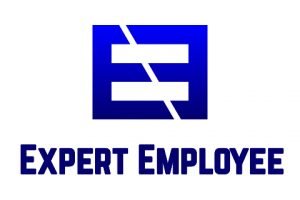This post contains affiliate links.
Apply for any job online and you know the routine, you upload a resume and then re-enter nearly identical information into the application system. Will millions of Americans looking for work the online forums are filled with complaints about the inefficient system and the pointlessness of time wasted to provide duplicate content. We contacted HR and IT experts to find out why job portals require applicants to re-enter resume information.
Employers ask for a resume and then require applicants to re-enter the same information into their application portal to standardize the information known about each candidate in the applicant tracking software (ATS) and to get your official signature that the information provided is accurate.
As recently as 2016, 50% of employers surveyed stated that lengthy applications will screen out casual candidates and good talent will be dedicated enough to fill out more information. They actually believe that the length of application processes is a positive because it “weeds out” applicants.
However, according to CareerBuilder research, 60% of job seekers abandon online job applications because the process is difficult or confusing (42%) or because it takes too long to complete (31%).
Internet job postings make it easy for candidates to apply for many job postings in a single session and recruiters are getting overwhelmed by the volume of candidates. Hiring teams are trending towards ever more advanced machine learning AI-enabled ATS systems for a systematic way of comparing candidates in their talent acquisition process.
Why You Need To Fill Out Employment History After You Provide a Resume

Every candidate spends hours crafting their resume to look just the way they want it – emphasizing their strong points and minimizing weak areas. Most resumes follow the traditional reverse chronological format, but functional formats and combination formats are also common.
Recruiting teams don’t have time to decipher hundreds of resumes so they use the application system to standardize the information. The collect all of the information they need for their screening process and put it into a format the hiring team prefers.
Nearly all job portals collect the following information for all candidates:
- Contact Information: candidate name, address, email, and phone number
- Employment History: employers, job titles, dates of service, and position responsibilities
- Education History: programs attended, degrees and certifications earned, and graduation dates
- Available for Work Date: date the candidate is able to start work if hired
- Desired Compensation: hourly rate or salary expectations
Expert Tip: Employers ask for target compensation information to gain an upper hand in negotiations. Whenever possible put ‘negotiable’ and ask the employer for their target range during discussions.
According to Zety, the average job posting gets 250 applications, between 4-6 candidates get called for an interview, and only one will get an offer. Companies are increasingly using ATS to handle the volume of applications generated by online job listings. In 2019, 55% of all employers were using ATS systems and that number increases to 99% of Fortune 500 companies.
Hiring companies do not have applicants re-enter the same information just to make them miserable, they do it so that each candidate is on equal footing. By collecting consistent information from everyone and stripping away the formatting and design of the resume, the recruiting team can easily compare credentials for all candidates and do it impartially.
The ATS database is designed to be fair and equitable. Employers purposefully do not collect information that could be construed as biased or discriminatory (source). Recruiters use the database to search for candidates that have specific skills and experience, and even use the ATS to score each application against the requirements and qualifications in the job description.
Expert Tip: Modern ATS systems can import and parse resumes accurately. If your resume does not import cleanly it means you should change your resume structure and format to be compatible.
How the Job Application is Different From Your Resume
Employers use their ATS system to easily compare candidates – when they need to find someone who has 2 years experience as a supervisor who also has a required certification they simply run they query against the database and look at candidates that fit. Manually reviewing resumes for the same criteria would be a painstaking process.
Resumes are formatted for humans but the initial screen is done in the ATS, and the online portal is designed to feed the ATS system. Recruiters use the ATS to have a systematic way of comparing candidates and filter down to a reasonable number.
Expert Tip: Recruiters and hiring managers want a resume that is easy to quickly read and understand. Keep your resume professional and don’t include fancy design elements unless you are in a creative field.
Entering the correct information into the job portal is vital to your job search. As technology advances, sophisticated hiring teams are even using automated robot resume readers to provide the first filter and identify the most promising candidates in the recruiting process.
When recruiter search for key criteria your application won’t even be reviewed if it doesn’t contain the information, even when your resume shows you are qualified.
Recruiters use the ATS to sort through all of the applications and narrow the field to qualified candidates. After a manual resume review the recruiter will usually complete an initial phone screen before even involving the hiring manager and interview team. Only candidates that make it past these stages have their resume reviewed by the actual person making the hiring decision.
Expert Tip: Most employers follow the same general hiring process, learn what to expect at each stage in How Companies Hire Employees: The Hiring Process Step by Step.
Why Your Resume Needs To Match the Job Description

Even when your resume describes the same responsibilities, skills, and experience as the job description, your application could still be overlooked if you don’t match your terminology with the job description.
For example, does your company have a Purchasing department or a Procurement team? A Logistics team or Supply Chain team? The functions and responsibilities may be identical but a hiring team may not always search for all permutations.
You don’t need to duplicate the job description word for word in your application, but don’t leave your application to chance or rely on an overworked recruiter to make the connection for you. Either add in the terms from the job description to your application where appropriate, or substitute when synonyms are used.
Why You Should Never Put ‘See Resume’ on Your Application
Similarly, you should never put “see attached resume” on your application because any keyword search by the hiring team will not return a match. Don’t skip re-entering all of your information even if you are burnt out from the tedious process.
Recruiters are normally working to fill multiple positions, each with hundreds of applications. They simply do not manually review each candidate except for highly specialized roles that are difficult to staff.
When you write “see resume” all of the time and energy you spent creating your resume and finding that perfect job opening will go to waste. Before they even look at any resumes, recruiters use the ATS system to find the strongest candidates that meet the most important criteria. Any application with “see resume” will get screened out with all the other low quality candidates.
If you do nothing else, at least copy and paste the information from your resume into the available fields. You’ve already optimized your resume and probably had to trim some content so it would fit onto the page. Take advantage of the fact that career portals are not so limited and will allow significant content in their text input fields. Use the additional space to expand on your experience and include other information pulled from the job description.
Expert Tip: Remember that the process is annoying and difficult for everyone applying, not just you. Put in the time and effort to make your application stand out. Searching for a new job is in part a numbers game, but put your best foot forward with each application.
Job Applications Include a Certification Signature

Job applications nearly always require a signature from the candidate that the information provided is accurate and complete. Whether its completed online or on paper, a job application is an official legal document. You should never lie on your resume, but it is typically viewed more as a personal marketing document.
Resumes should contain your career accomplishments and quantify them with the Challenge-Action-Results method. Your potential employer has no way of verifying whether you landed that big customer, really led the project to success or were simply a team member.
Employment history background checks are usually only able to confirm dates of employment and rehire status, while some will confirm job title. Due to concerns about litigation no employers will provide job duties, salary information, or details about your performance and achievements.
By contrast, your job application is a signed legal document. Always answer questions on a job application truthfully and make sure the information is consistent with your resume. Employees have been fired for falsifying job applications, sometimes years after they’ve been hired. Assume that any lie you put on your application will eventually be found by the human resources department of the company.

